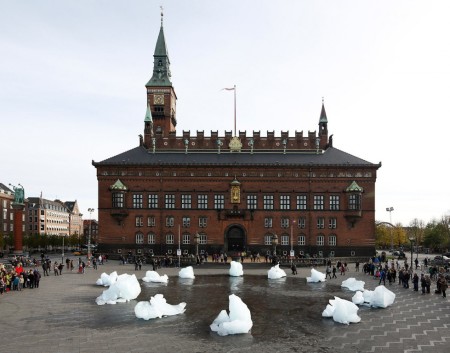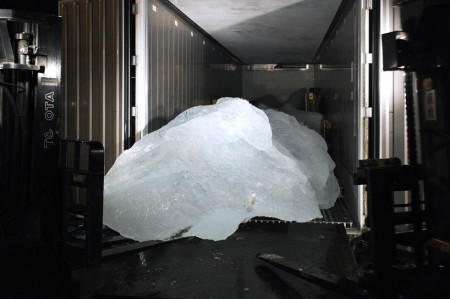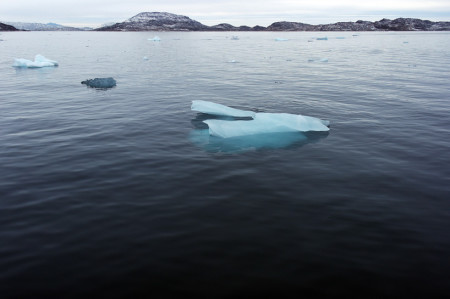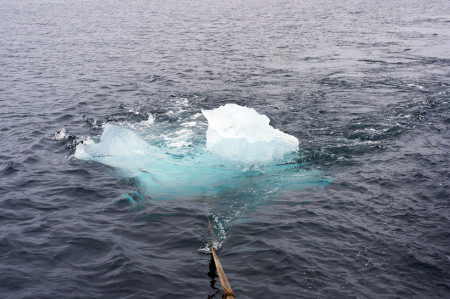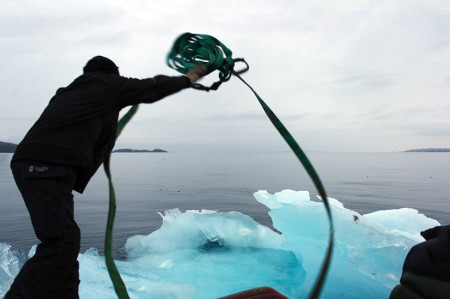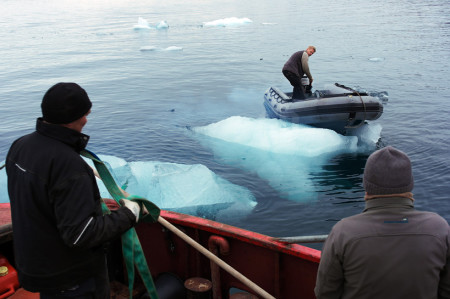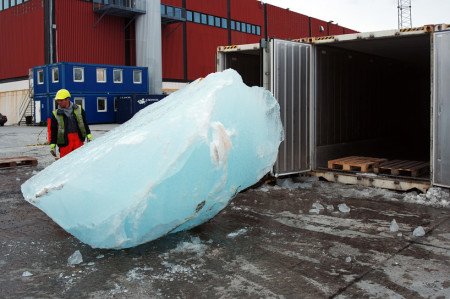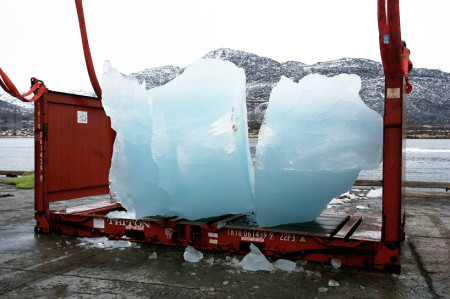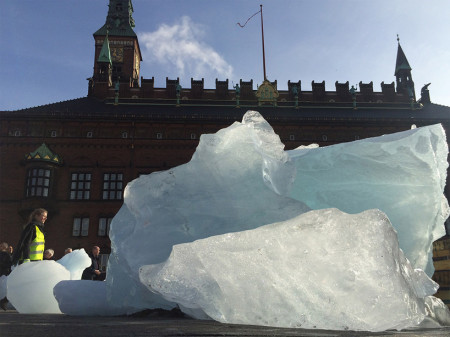28\10\2014
Written by Daan Rombaut
Artist Olafur Eliasson moves 100 tonnes of ice to Copenhagen to visualise climate change
Artist Olafur Eliasson and geologist Minik Rosing want to keep the people thinking about the consequences of climate change. That is why they presented an installation called ‘Ice Watch’ that visualises climate change by placing 100 tonnes of inland ice at the Copenhagen City Hall Square. The ice has been collected from a fjord outside of Nuuk, Greenland by Royal Arctic Line divers and dockworkers, contracted by Group Greenland/ Greenland glacier ice, and shipped in four refrigerated containers. The installation consists of twelve large blocks that have been displayed in the formation of a clock, to serve as a physical wake-up call that the ice is melting and sea levels are rising. The project marks the publication of the firth assessment report of the UN intergovernmental panel on climate change. “Today we have access to reliable data that shed light on what will happen and what can be done. Let’s appreciate this unique opportunity – we, the world, must and can act now. Let’s transform climate knowledge into climate action,“ according to Eliasson and Rosing.
“As an artist, I am interested in how we give knowledge a body. what does a thought feel like, and how can felt knowledge encourage action? Ice watch makes the climate challenges we are facing tangible. I hope that people will touch the inland ice on city hall square and be touched by it. perception and physical experience are cornerstones in art, and they may also function as tools for creating social change. We are all part of the ‘global we’; we must all work together to ensure a stable climate for future generations,” adds Olafur Eliasson.
“Ice is a wonderful, peculiar substance. just as the progress of our civilizations has been tied to the coming and going of the ice ages, so, too, are our future destiny and the destiny of ice tied together. Through our actions we are now close to terminating the period of stable climate that served as the condition for civilizations to arise and flourish. Science and technology have made it possible for us to destabilise earth’s climate, but now that we understand the mechanisms behind these changes, we have the power to prevent them from growing,’ concludes Minik Rosing.
All photos by Group Greenland

